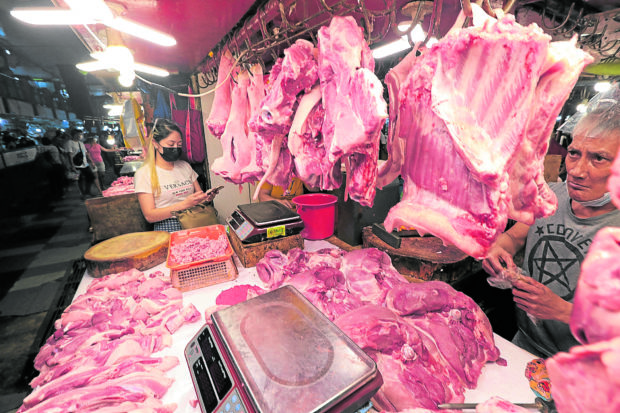[ad_1]
MANILA, Philippines – Even after the government allowed the importation of more pork products in an attempt to curb inflation, the National Economic and Development Authority (Neda) admitted that prices meat remained high in most parts of the country.
Despite Decrees Nos. 133 and 134 which reduced tariffs on pork products and reduced the tariff rate, only four regions recorded single-digit meat inflation rates while the others posted high rates of meat inflation. meat inflation above the national average of 4.2 percent between January and August. , said the Department of Agriculture (DA).
The DA attributed this to the “global problem of transport and movement of imported goods due to the pandemic” and the “very low use of [tariff cuts] due to very strict market and distribution restrictions.
“[These factors] overcame the goals of OE 133… which are to close the supply gap in the pork market, provide consumers with adequate and affordable meat and reduce inflation, â€the DA said.
Traffic jam
As a solution, Agriculture Secretary William Dar approved a new circular memorandum allowing importers and traders to sell their imported products outside of the National Capital Region (NCR) and meet the needs of processors and buyers. institutional.
The two EOs lowered tariffs on imported pork on the condition that they are only sold to wholesalers and retailers in the Metro Manila, Bulacan, Laguna, Cavite and Rizal regions, and that they only take effect for a period of time. 12 months.
The DA said the lockdown affected around 70 percent of pork imports due to arrive between July and October, with transport time stretched to 120 days, from the usual 30 to 40 days.
For example, point-of-sale restrictions have forced importers to keep their imported products in cold storage at NCR, Central Luzon and Calabarzon.
Useless
But Jayson Cainglet, executive director of Samahang Industriya ng Agrikultura, said the circular would be unnecessary since the DA could not determine whether pork products supposed to be in cold storage had not reached the countryside.
“Seven months after the publication of the EO, even Neda admitted that pork prices remained high even with the flood of pork imports and low prices for local pork on the farm,†Cainglet added.
On October 25, the Neda estimated that the country’s pork supply would remain insufficient by 278,600 tonnes by the end of the year.
As of September 27, Neda said, only 26.4 percent of the first tranche of import allocation below the minimum access volume has been used.
Le Neda said the average frozen pork stock in the first three weeks of September rose to 79,042 MT from 73,159 MT in August.
In addition to pork prices, the Nedas also predicted a shortage of lowland vegetables, whose output of 1.3 million tonnes this year would account for 80 percent of local demand.
Read more
Subscribe to INQUIRER PLUS to access The Philippine Daily Inquirer and over 70 titles, share up to 5 gadgets, listen to the news, download from 4 a.m. and share articles on social media. Call 896 6000.
For comments, complaints or inquiries, contact us.
[ad_2]




